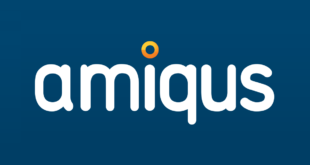How has the kids’ market for games changed in the last few years?
There is definitely a kind of mini revolution going on when it comes to kids gaming. Most developers now seem to be looking at platforms such as DS, PS2 and Wii and recognising the value and popularity of not only kids gaming, but family gaming.
A study we commissioned last year showed that mums featured quite highly when it came to the question of which other members of the family use new games consoles. Educational gaming is a new genre that seems to be growing in popularity, with parents realising that a console need not only be for gaming. I was even approached by a couple of companies wishing to see how viable advertising educational gaming products would be on Jetix.
A new trend is the popularity of playing games against each other – even if you’ve never met. Jetix has a number of microsites that engage kids to do just that, including a microsite for a series called Oban Star Racers. In the microsite is a bespoke game where kids can compete with each other across Europe. The game has leader boards listed by Europe and individual country. A kid can then choose who they want to race to see if they can beat the other person’s time. Currently the game has had over four million plays.
What research have you conducted into the sector?
The main survey we do is a tracking study called Kidometer. Following a pilot study in 2005 we decided to produce a similar tracking study on a bi-yearly basis.
Wave One came out in October 2006 with Wave Two tracking the changes to March 2007. The Kidometer studies look into various aspects of kids’ lives and covered a myriad of themes including Gaming, Free Time, What’s Cool, Internet Usage, Mobile Phone Usage and Pocket Money. The studies cover ten European markets with a sample size of 5,000.
Further, on an annual basis we commission a study across Europe to specifically look at kids’ gaming to see what the current trends and changes in the market have been. Listed here are a few of the gaming insights and trends that Wave Two of Kidometer has identified:
* On a normal day kids in the UK and France spend 1.2 hours a day playing computer games on a console, with Sweden 1.1, Netherlands, Norway and Italy 1.0, Spain 0.9 and Denmark, Germany and Poland 0.8.
* In seven out of the ten markets, playing computer games is the number one cool thing that kids and their friends are into.
* Ownership of the PS2 and the DS has increased since Wave One, along with handhelds. PS2 ownership was 50 per cent and is now 53 per cent. The DS was 28 per cent and is now 34 per cent.
What do you see happening to the kid’s market going forward?
We feel there is still a lot of potential for the kids’ gaming market to expand. With the advent of the Wii and its raft of family targeted games, the continued popularity of the DS and the high penetration and massive library of kids focused games available on the PS2, it is hard to see the momentum slowing.
What are the best ways to market to a kids’ title?
We have found the optimum way to really get kids interested in an advertisers’ product is to use TV and online together in the form of an integrated campaign. The TV advertising will typically consist of specially produced competition or promotional spots to drive kids to a microsite found within our own Jetix website walls. To further increase traffic, online media will link through to the product microsite. Once in the advertiser microsite kids can find a multitude of areas to explore.
The main benefit is that if kids like the product and the content is interesting they will spend a lot of time entrenched in it – it’s all about creating a positive product experience.

 MCV/DEVELOP News, events, research and jobs from the games industry
MCV/DEVELOP News, events, research and jobs from the games industry



